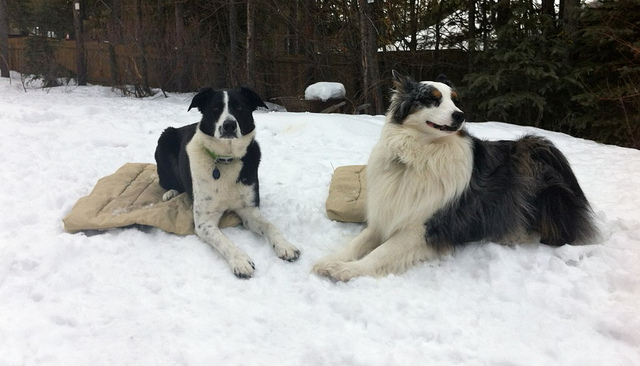It seems like a cute trick – you tell your dog to “go to bed” and he runs to his bed (mat, kennel, whatever) and lays down. But actually, a “mat” or “bed” behavior is an extremely useful training technique and one that I recommend every dog owner teach their dog. Here are just a few reasons why every dog needs a “bed” behavior.
#1 – Teaches self-control
The basis of the mat behavior is a prolonged stay. No matter what’s going on around him, your dog is to stay on his bed until released. It is a great way to work on self-control, especially for high energy dogs.
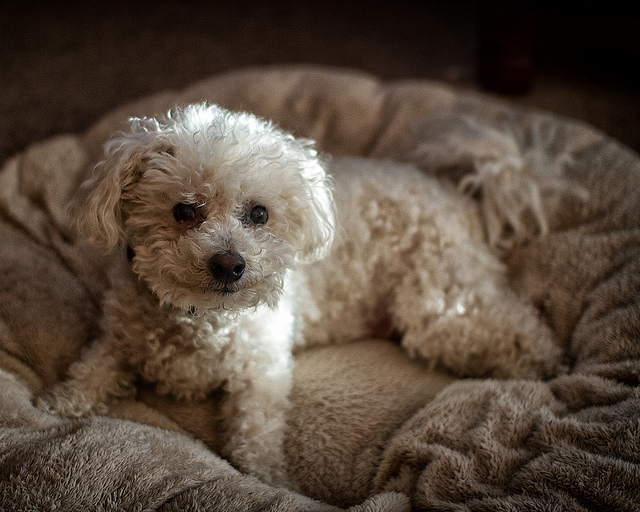
#2 – No begging at the table
A mat behavior is extremely useful for dogs that’s just won’t stop begging at the table. Send them to their bed before your dinner and you can have a peaceful meal. Remember, it’s not a punishment, so give your dog a toy, chewing, or his own dinner to enjoy while staying on his mat. And reward him afterward with some playtime or another treat for staying.

#3 – Less likely to bolt out the door
If you have taught your dog to go to his mat and stay there when guests come through the front door (or when you step out to grab the paper!), he will be a lot less likely to bolt out the door and get lost or hit by a car. It’s a great safety behavior.
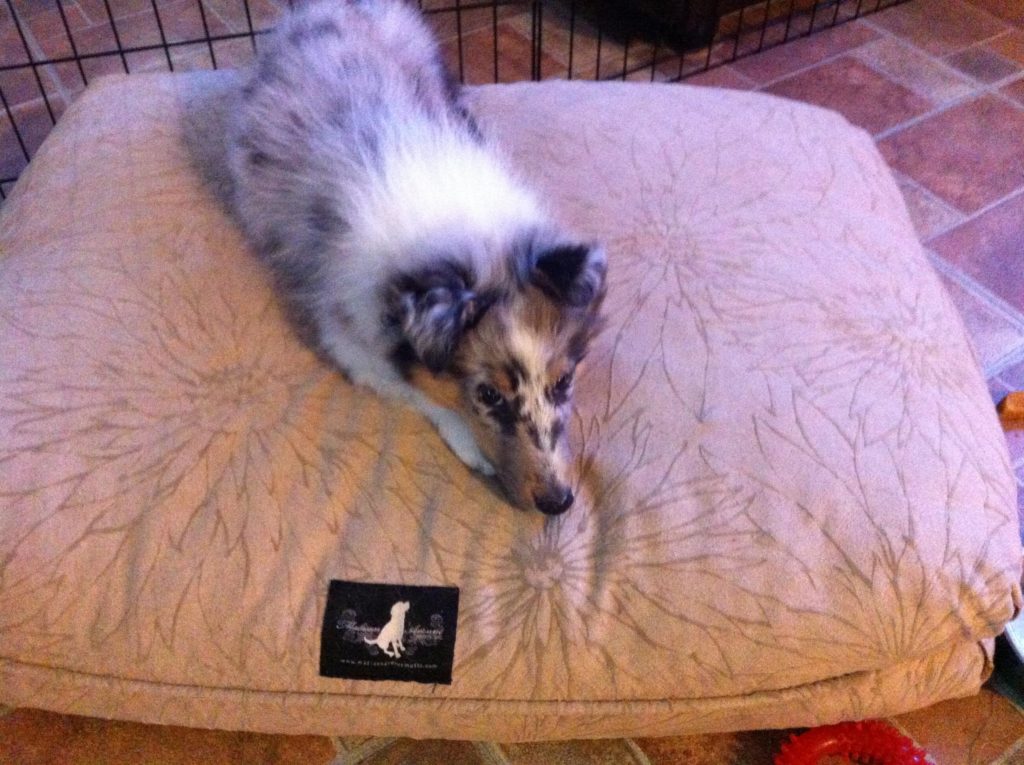
#4 – No more jumping up to greet
Teaching a mat behavior is a great way to avoid those awful greetings where your dog jumps and slobbers on everyone who steps inside your front door. If he has been taught to stay on his mat he can’t also jump and drool on everyone. Your guests will thank you.

#5 – Gives your dog a job
A lot of behavior issues are caused by your dog not knowing what he should be doing. Lack of structure, routine and/or a job can cause a dog to be reactive, nervous and stressed. The mat behavior gives these types of dogs the structure and job they need. So, instead of barking at all the other dogs in class, your dog knows his job is stay peacefully on his mat. Or, instead of barking at the cars that go by outside your favorite coffee shop, he knows he is supposed to stay on his mat and check in with you periodically by offering eye contact. Instead of lunging and stealing that other dogs chew, he knows to stay put and be content with his own (the sheltie is my resource guarder as a pup, enjoying his own chew and leaving another trainer’s dog alone).
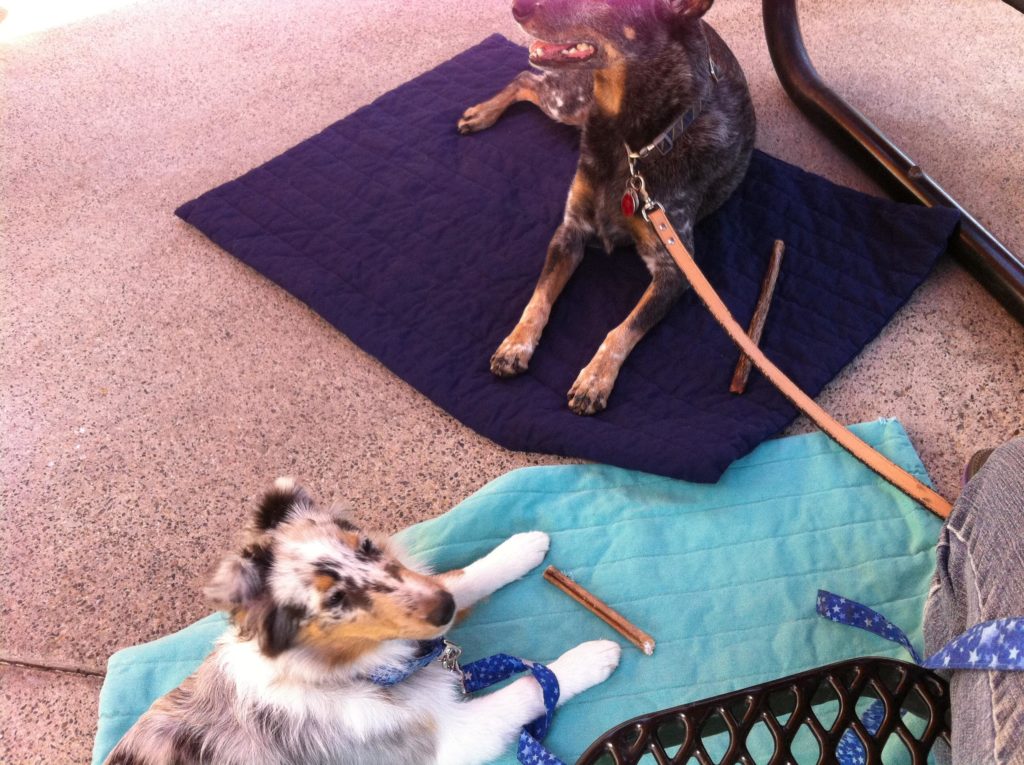
#6 – Gives them a safe place
If you have a dog that is fearful – doesn’t want other people or dogs coming up to them – a mat can become a safe place. They know that while they are on it, you won’t allow other dogs and people into “their space,” making them less fearful about watching the world around them from a comfortable distance. (you must uphold your end, however, and make sure no one does bother them on the mat!) It’s a great first step to helping scared dogs overcome their fears.
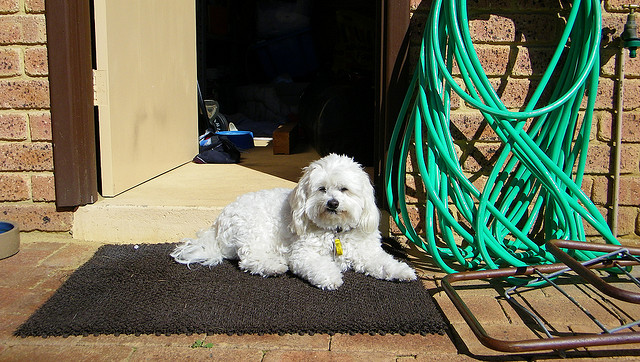
#7 – Makes life with multiple dogs easier
Teaching several dogs in one house can be difficult – unless they have a mat cue! Put them all on their mats and cue them off individually – while you work one dog, the others are working on their mat behaviors! It’s helps remove some of the chaos as well, when you are trying to do things like get put on collars and leashes (call each dog to you individually), meal time (have them stay on their mats while eating), when guests are over (four dogs saying hi at once is overwhelming, have them come one at a time to say hi), etc.
